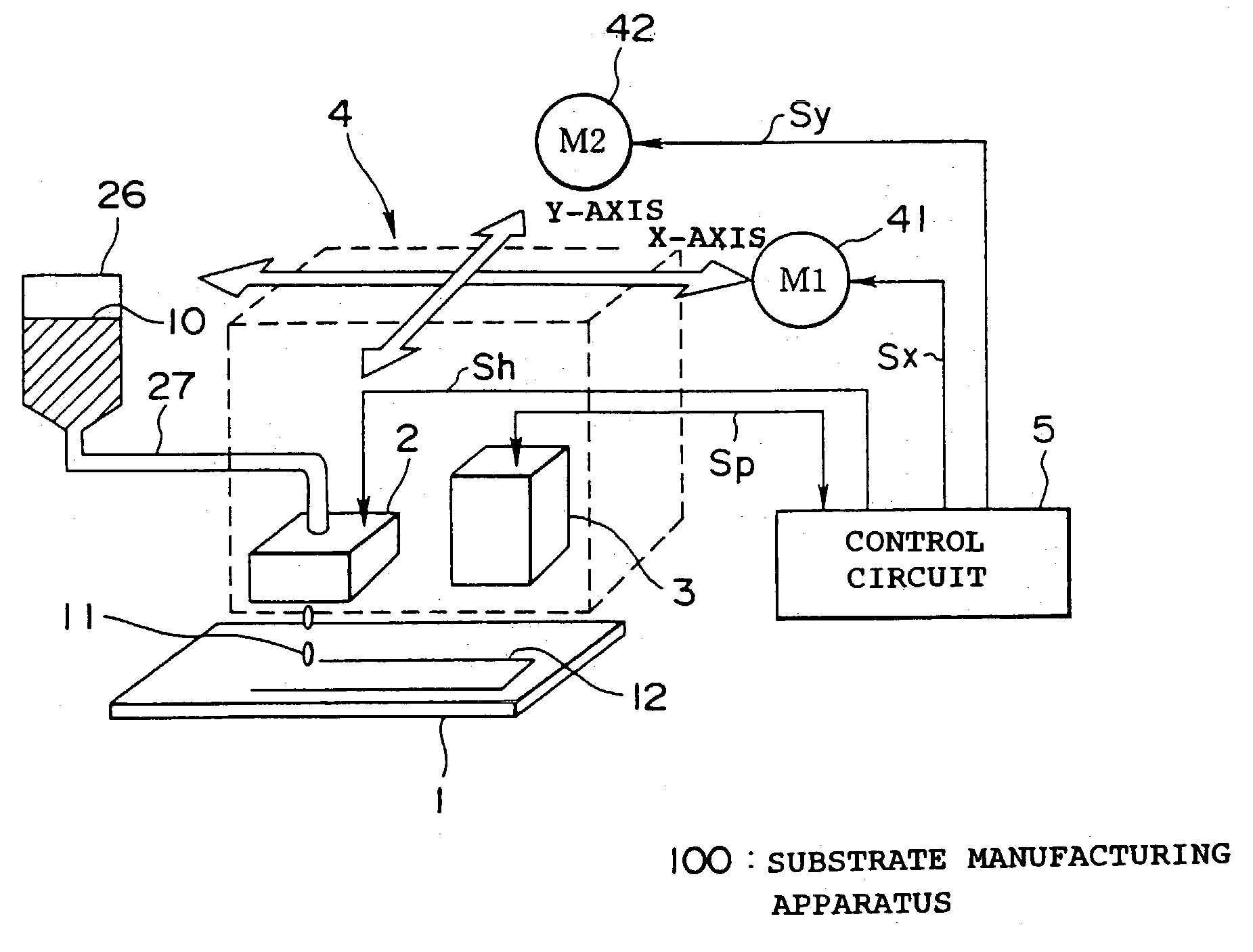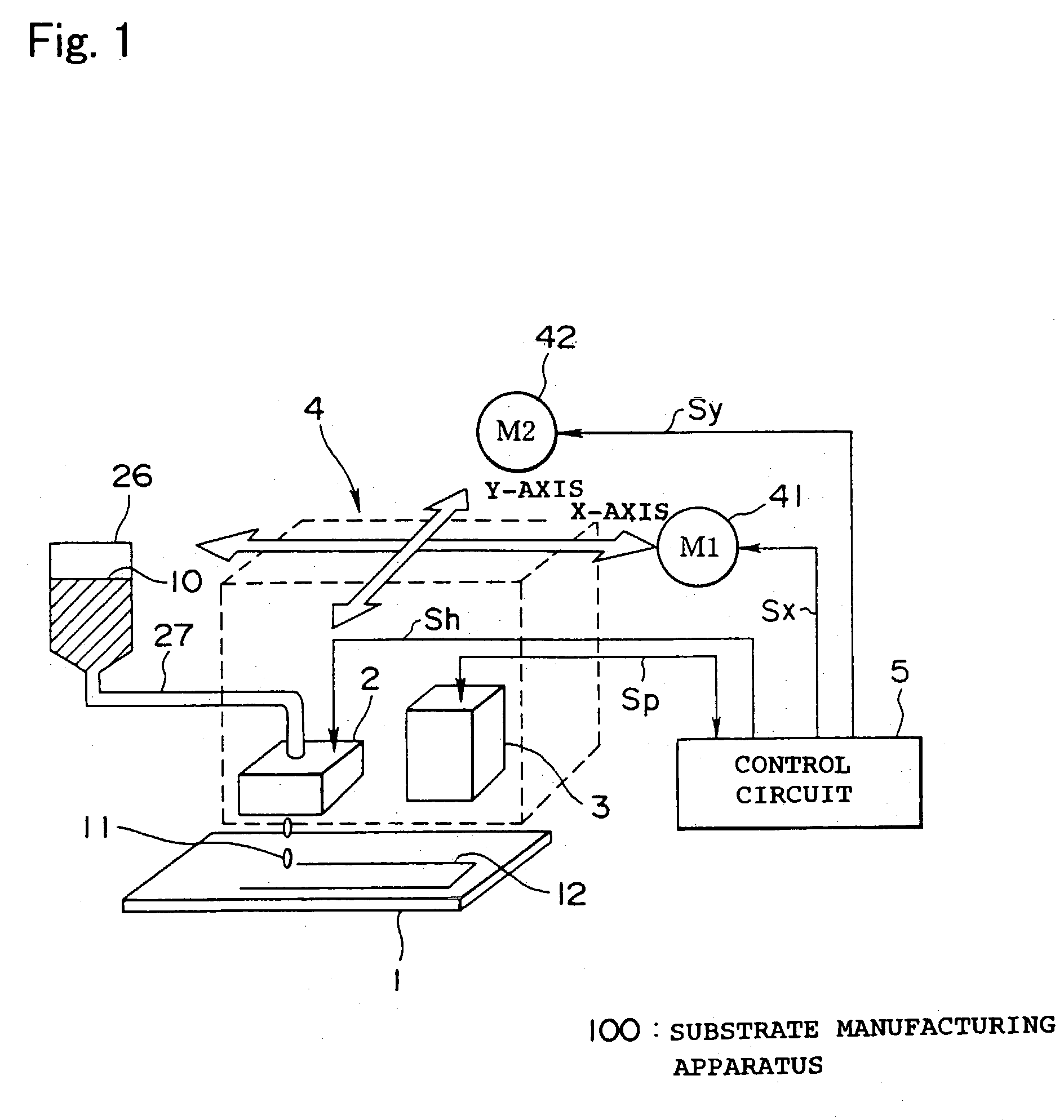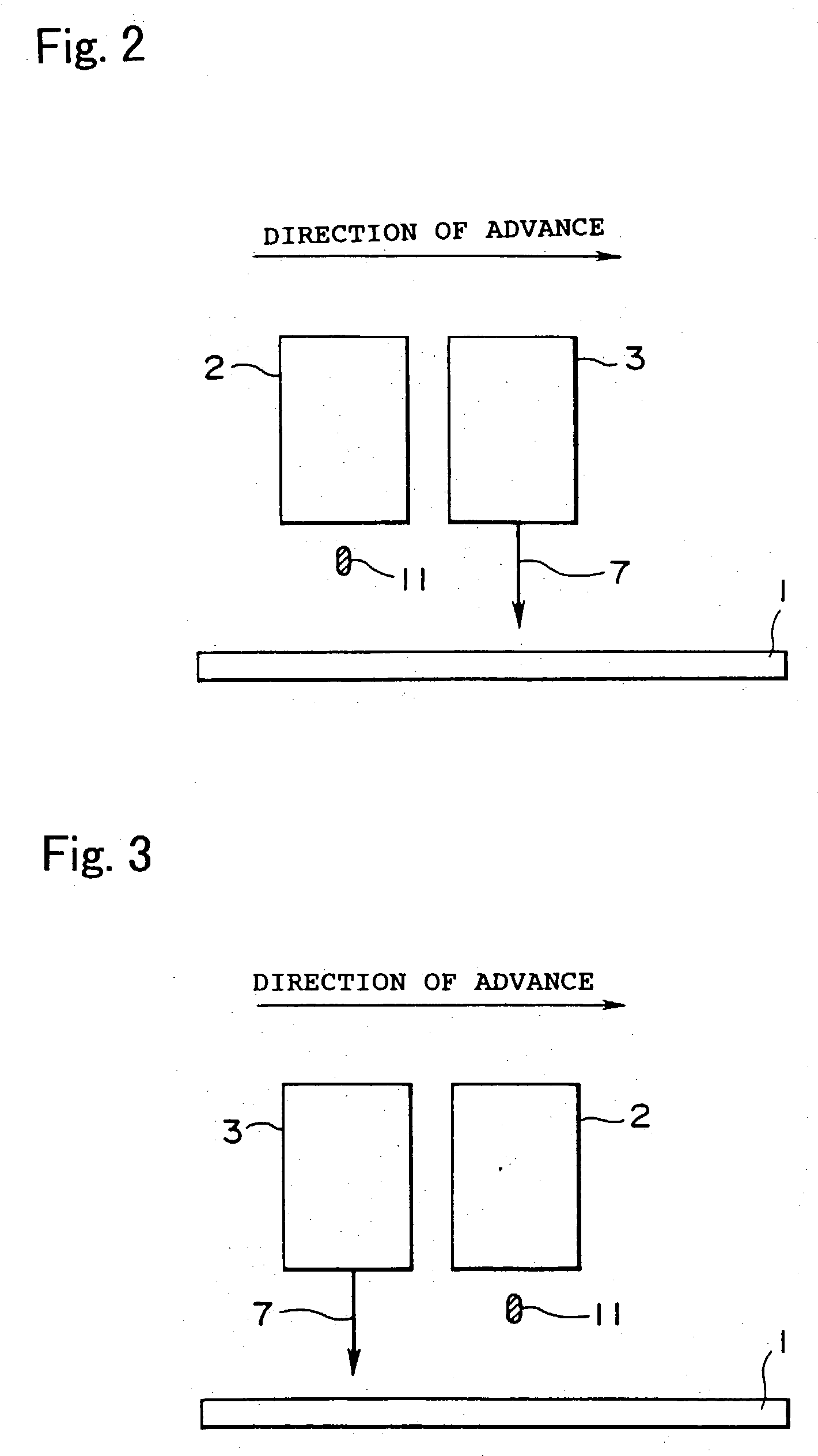Pattern formation method and substrate manufacturing apparatus
a substrate manufacturing and pattern technology, applied in the direction of conductive pattern formation, coating, printing, etc., can solve the problems of high cost, complicated process control, and inability to form fine patterns merely, and achieve the effect of avoiding the formation of fine patterns
- Summary
- Abstract
- Description
- Claims
- Application Information
AI Technical Summary
Benefits of technology
Problems solved by technology
Method used
Image
Examples
embodiment 1
[0077] Embodiment 1 of the present invention relates to a treatment that exerts action (reduction in solubility) on the fluid, and is primarily used in the first and second arrangements described above.
[0078] FIG. 5 is a side view illustrating the treatment concept of Embodiment 1. The treatment apparatus 301 of Embodiment 1 is configured such that a treatment 701 for lowering the solubility of substances admixed into the fluid and precipitating these substances as solids can be applied to the substrate 1, before a droplet 11 is ejected. A treatment in which a hot-air blast, laser irradiation, lamp irradiation, or the like is performed to vaporize the solvent components of the fluid can be suggested as such a treatment. Although the drawing depicts the structure utilized for the first arrangement, the treatment apparatus 301 can be disposed behind the ink-jet print head 2 in the direction of advance when the structure is utilized for the second arrangement.
[0079] When hot air is to ...
embodiment 2
[0084] Embodiment 2 of the present invention relates to a treatment that induces chemical action (chemical reaction) in the fluid, and is primarily used in the first and second arrangements described above.
[0085] FIG. 6 is a side view illustrating the treatment concept of Embodiment 2. The treatment apparatus 302 of Embodiment 2 is configured such that a reaction solution 702 capable of breaking up a disperse system or initiating a chemical reaction in the fluid is ejected on the substrate 1 before the fluid 10 is ejected. The same structure as that of the ink-jet print head 2 should preferably be used as the treatment apparatus 302. This is because substantially the same amount of reaction solution as that of the fluid droplets 11 can be ejected in a controlled manner. Although the drawing depicts the structure utilized for the first arrangement, the treatment apparatus 302 is disposed behind the ink-jet print head 2 in the direction of advance when the structure is utilized for th...
embodiment 3
[0091] Embodiment 3 of the present invention relates to a treatment for improving the affinity of the substrate as a physical-chemical action, and is primarily used in the first arrangement described above.
[0092] FIG. 7 is a plan view illustrating the treatment concept of Embodiment 3. The treatment apparatus 303 of Embodiment 4 is configured such that the pattern-forming region of the substrate 1 can be surface-modified to achieve affinity for the fluid 10 before this fluid has been ejected onto the substrate.
[0093] The following methods can be used as surface modification treatments aimed at achieving affinity when the fluid contains polar molecules (moisture and the like): methods for applying silane coupling agents; methods for forming aluminum oxide, silica, and other porous films; and methods for performing reverse sputtering in argon or the like; as well as corona ejection treatments, plasma treatments, ultraviolet irradiation treatments, ozone treatments, degreasing treatmen...
PUM
 Login to View More
Login to View More Abstract
Description
Claims
Application Information
 Login to View More
Login to View More - R&D
- Intellectual Property
- Life Sciences
- Materials
- Tech Scout
- Unparalleled Data Quality
- Higher Quality Content
- 60% Fewer Hallucinations
Browse by: Latest US Patents, China's latest patents, Technical Efficacy Thesaurus, Application Domain, Technology Topic, Popular Technical Reports.
© 2025 PatSnap. All rights reserved.Legal|Privacy policy|Modern Slavery Act Transparency Statement|Sitemap|About US| Contact US: help@patsnap.com



